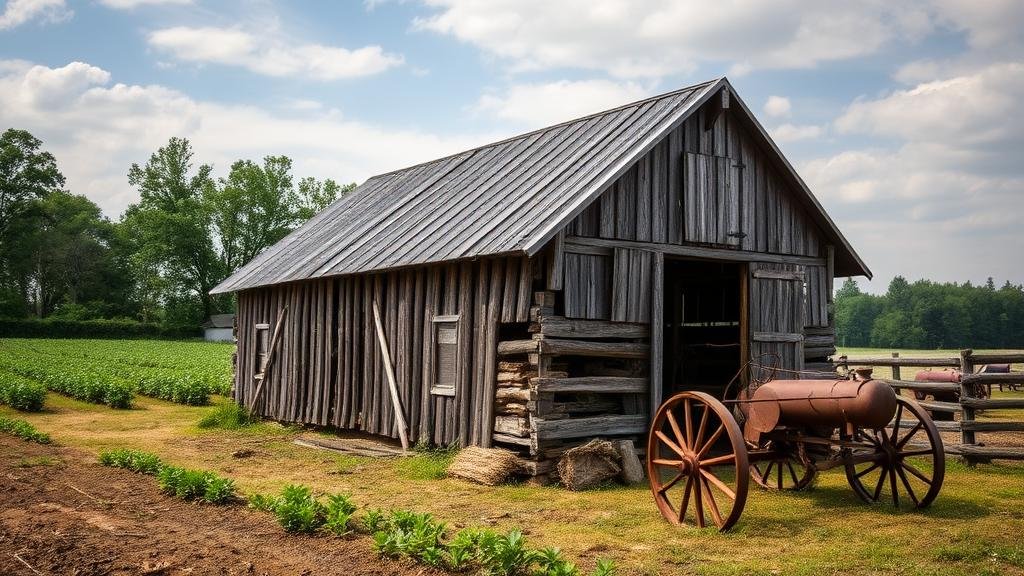Exploring Historical Tobacco Barn Maps for Early Farming Equipment Finds
Exploring Historical Tobacco Barn Maps for Early Farming Equipment Finds
The study of historical tobacco barn maps provides invaluable insights into early farming practices, particularly in the context of agricultural equipment used during the tobacco cultivation boom of the 18th and 19th centuries. This article seeks to explore the significance of these maps, examine the types of equipment that may be uncovered, and discuss the implications for our understanding of agricultural history in regions such as Virginia and North Carolina.
Background: The Role of Tobacco in American Agriculture
Tobacco farming played a crucial role in the economic development of the American South. From the introduction of tobacco seed in the early colonial period to its rise as a cash crop, the sector was marked by significant innovations in farming practices and equipment. Historical documents indicate that tobacco was first cultivated in Virginia in 1612, with cultivation expanding rapidly thereafter as demand grew in Europe.
The Importance of Tobacco Barn Maps
Tobacco barn maps are a treasure trove of information regarding past agricultural practices. These maps often illustrate the geographical layout of farms, locations of barns used for curing tobacco, and associated farming equipment stored or utilized within these structures. According to a study by the Virginia Historical Society, over 50% of tobacco produced in the United States between 1850 and 1900 came from Virginia and North Carolina alone, suggesting a concentrated use of specialized farming equipment in these regions.
Types of Equipment Documented in Historical Maps
These historical maps not only highlight the layout of tobacco farms but also often include references to various types of farming equipment, which can include:
- Tobacco Tractors: Used primarily for planting and cultivating tobacco.
- Handheld Priming Knives: Essential tools for harvesting tobacco leaves.
- Pack Houses: Structures where harvested tobacco was stored and processed.
- Haying and Plowing Equipment: Used in crop rotation systems to enhance soil quality.
For example, hand-held priming knives were standard tools for laborers involved in the harvesting phase, while tobacco tractors revolutionized the planting process. Archaeological findings support the presence of such equipment at various excavation sites within historic tobacco barns.
Case Studies: Notable Finds through Map Analysis
A notable example exists at the Monticello plantation in Virginia, where mapping techniques led researchers to uncover remnants of tobacco equipment that date back to the late 1700s. Utilization of historical maps combined with archaeological digs revealed hand tools, including the aforementioned priming knives and other structures like drying barns.
Similar efforts have been carried out in North Carolina where research teams have discovered early tobacco planters from the mid-19th century that were outlined in historical records and maps. The North Carolina Department of Agriculture’s archival collections serve as a foundation for these discoveries, illustrating the contributions of localized research efforts.
Methodological Framework for Research
The process of exploring these maps and conducting subsequent archaeological surveys involves several key steps:
- Historical Research: Gathering data from agricultural journals, local archives, and historical societies.
- Map Analysis: Examining geological features and layout of barns as documented in historical maps.
- Field Surveys: Conducting on-site assessments to confirm the presence of documented structures and equipment.
- Artifact Analysis: Collecting data from unearthed artifacts to establish a timeline of usage.
Conclusion: Implications for Future Research
Exploring historical tobacco barn maps offers a unique lens through which we can understand early farming equipment and practices. As research continues, it holds the potential for revealing more about the agrarian history that shaped the Southern economy. A deeper understanding of the use and evolution of farming equipment via these maps not only enriches the discourse around tobacco cultivation but also acknowledges its cultural significance. Future researchers are encouraged to utilize interdisciplinary approaches, merging archaeology with digital technologies, to gain even greater insights into this fascinating subject.
By methodically exploring and analyzing these historical resources, we can illuminate the agricultural innovations that have influenced modern farming practices. Integrating findings from archaeological digs with historical maps can foster a richer understanding of our agricultural heritage.


